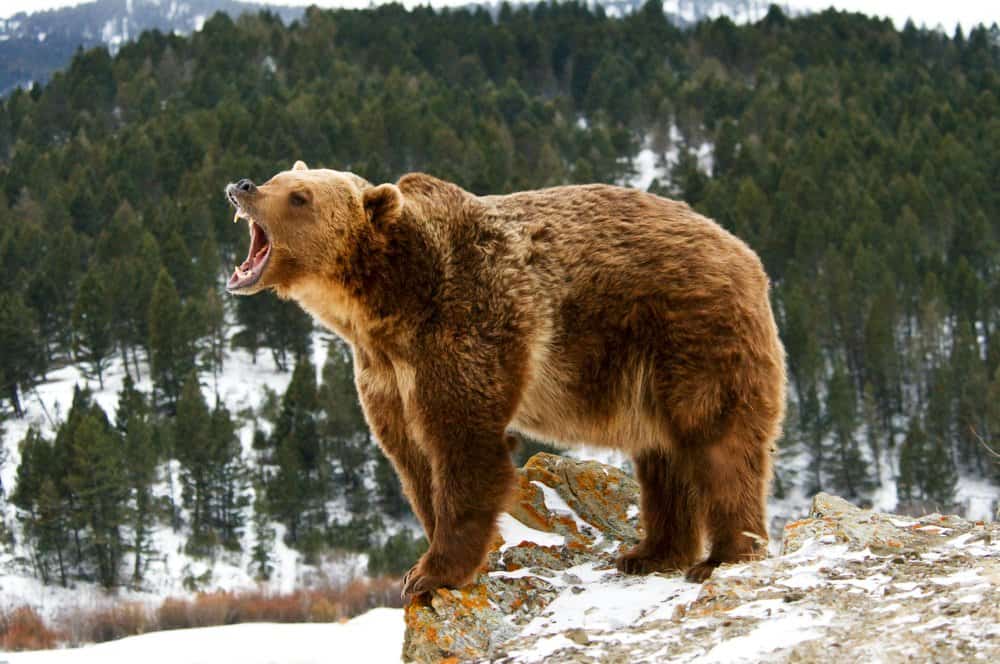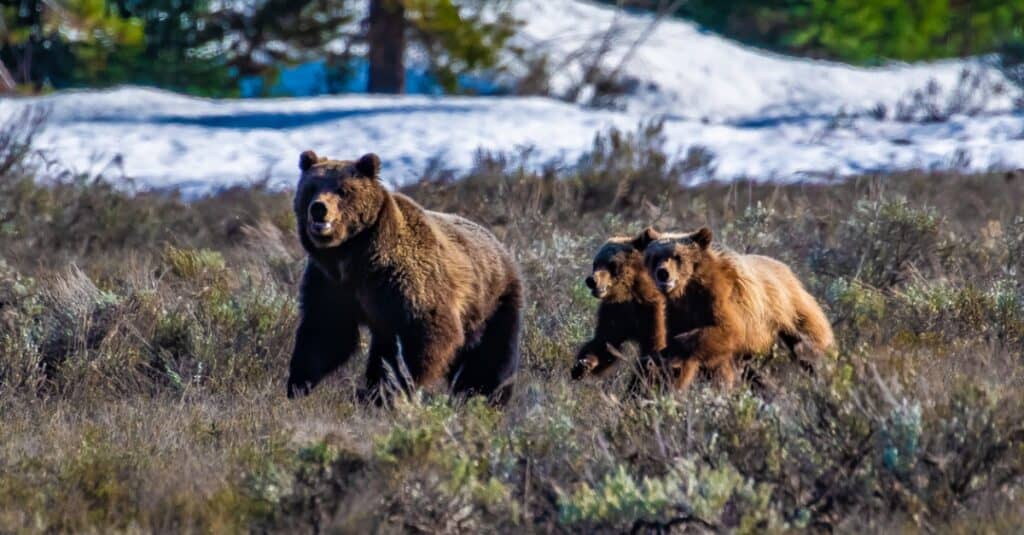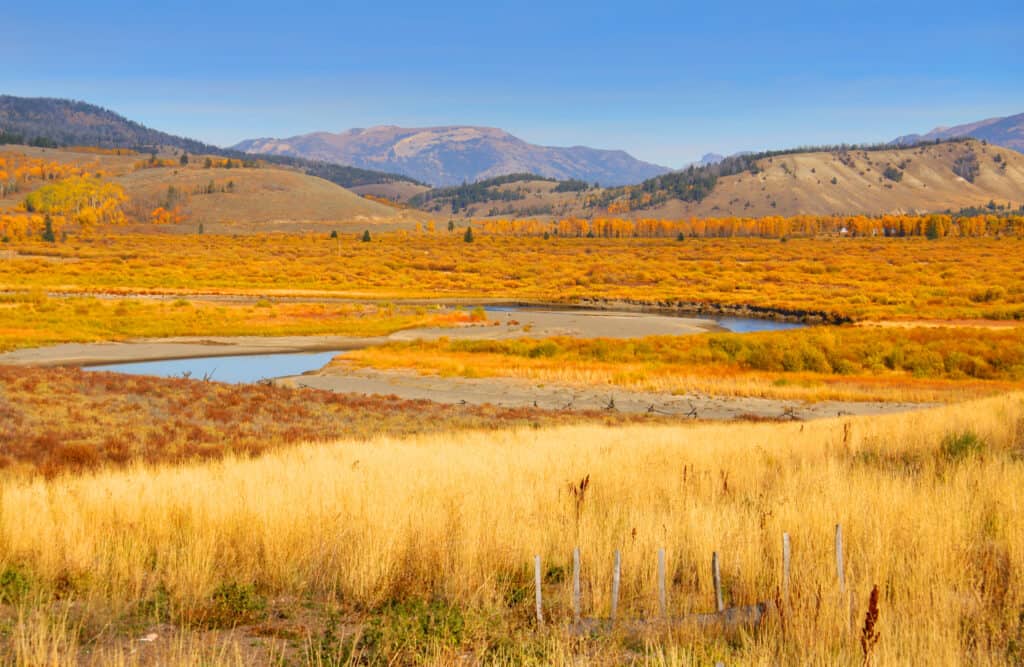Grizzly bears are some of the most ferocious predators in the world. They are generally considered to be the largest omnivores that walk on earth, especially since polar bears are exclusively carnivores. With such a ferocious reputation, however, many think that grizzly bear attacks are a common occurrence. Today, we are going to be looking at how often these attacks actually happen, particularly in one of their North American hotspots: Yellowstone. Let’s get started.
How Many Grizzly Bear Attacks Happen in Yellowstone?
Yellowstone National Park is one of the most famous parks in the United States, but it is a dangerous place crawling with grizzlies? Well, not exactly.
Currently, there has only been one instance of someone being attacked by a grizzly bear in Yellowstone in 2022, although that number could increase as the year goes on.
Since 1872, there have only been eight fatal grizzly bear attacks in Yellowstone National Park. For reference, more people have died from falling into the hot springs (22) than have ever been killed by grizzly bears. Additionally, there have only been 44 people injured by grizzly bears since 1979. With over 118 million park visits recorded, there is only a 1 in 2.7 million chance you will be injured by a grizzly bear while visiting Yellowstone National Park.
The reason? Bears, especially grizzly and black bears, would rather avoid humans than interact with them. The vast majority of the time, humans have no idea that a bear even passed by them since the bear wasn’t interested in any conflict. Even though grizzlies are apex predators that could hunt humans if they wanted, they generally prefer more familiar prey species.

There is only a 1 in 2.7 million chance you will be injured by a grizzly bear while visiting Yellowstone National Park.
©Scott E Read/Shutterstock.com
How Many Grizzly Bear Attacks Happen in General?
Yellowstone is a very small sample size of bear attacks in both North America and globally. Still, there are probably fewer bear attacks each year than most people realize. Let’s look at some of the data.
As it stands, there are only around 44 grizzly bear attacks worldwide, most of which occur in Europe. From 2000 to 2015, North America recorded 183 attacks, Europe recorded 291 attacks, and Asia recorded 190 attacks. Breaking it down over the 15-year recording period, there are about 40 total attacks each year.
Another interesting bit of information from a 2019 study on brown bears showed that very few attacks were predatory in nature, and those were almost exclusively on children or pets. The main reason that grizzly bear attacks occur can be attributed to the presence of a mother bear with cubs. A majority of the attacks were the result of a human accidentally engaging with a mother who had cubs, and most everyone knows not to mess with a female grizzly while she has cubs with her!
Female grizzly bears will defend their cubs fiercely if they feel threatened, and an accidental surprise could trigger a fight response from a mother bear.

The main reason that grizzly bear attacks occur can be attributed to the presence of a mother bear with cubs.
©iStock.com/John Morrison
Where in Yellowstone Do Grizzly Bears Live?
Yellowstone National Park is a large national park located primarily in Wyoming, although small percentages of the park are also located in Montana and Idaho. Throughout the entire park, there are about 150 grizzly bears. The number hasn’t changed much in the past few decades, indicating that the park is probably at its capacity in regard to grizzly bears. There are about 500-650 black bears in the park as well.
When it comes to preferred habitat, grizzly bears living in the continental United States are mostly plains-dwelling. In coastal regions like Alaska and British Columbia, grizzly bears live different lifestyles and have different dietary habits. In Yellowstone, they are most likely to be found in meadows, seeps, shrub fields, and timber stands, although they have seasonal preferences.

In Yellowstone National Park, grizzly bears are most likely to be found in meadows, seeps, shrub fields, and timber stands.
©SNEHIT PHOTO/Shutterstock.com
How Do You Avoid Grizzly Bear Attacks in Yellowstone National Park?
Yellowstone National Park is one of the most beautiful natural places in the world, but safety is important! Grizzly bears only live in a select range in the lower 48 states, and Yellowstone is part of that range. As scary as they might be, attacks are rare, and following a few important tips can lower the odds of an accidental encounter even further.
First, remember that grizzly bears are wild animals and should never be approached or fed. Associating humans and food for a bear likely means death for a bear, and potential harm for a human.
Second, continuously announce your presence. Occasionally shouting or talking loudly will ensure that bears know you are around and give them an opportunity to move away from you. You really don’t want to scare or surprise a bear accidentally. If a mother with cubs is in the area, this is crucial.
Third, always follow food and safety guidelines. If that means hanging food while camping, hang your food. Many places recommend bear spray as an additional precaution.
Up Next
- How Many Grizzly Bear Attacks Happen Per Year?
- Where Do Grizzly Bears Live in Montana?
- Discover the Largest Grizzly Bear Ever!
The photo featured at the top of this post is © Volodymyr Burdiak/Shutterstock.com
Sources
- JSTOR, Available here: https://www.jstor.org/stable/3872900
- Scientific Reports, Available here: https://www.nature.com/articles/s41598-019-44341-w
Thank you for reading! Have some feedback for us? Contact the AZ Animals editorial team.






